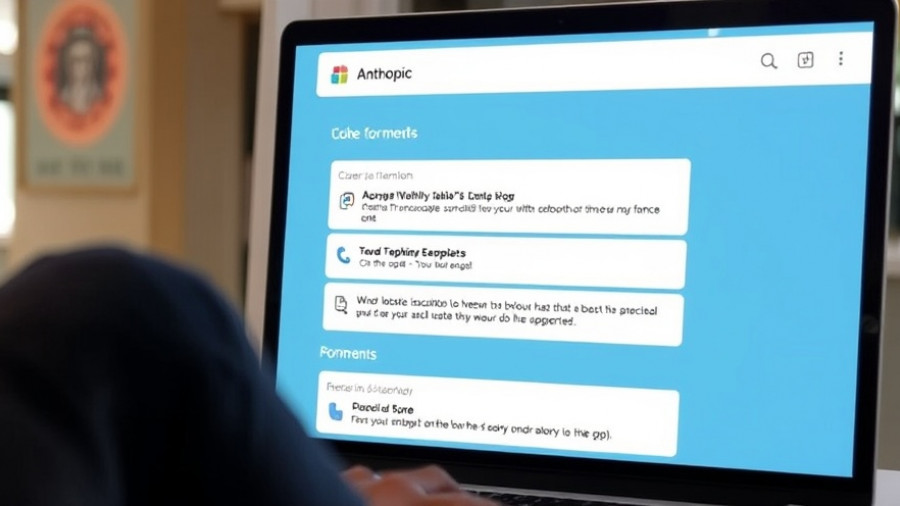
Understanding the Uneven Spread of Claude.ai in the Workplace
The recent Anthropic Economic Index sheds light on the growing yet uneven adoption of Claude.ai across various workplaces. The index utilizes first-party data to delve into how factors such as income levels, geographic locations, and the nature of tasks influence the integration of AI tools into business operations.
Income and AI Adoption: Who Benefits Most?
One of the most critical revelations from the study is the direct correlation between income levels and the likelihood of adopting AI technologies. Businesses in higher income brackets seem to adopt Claude.ai more rapidly, benefiting from the efficiency and innovative capabilities the AI brings to the table. For instance, companies in affluent areas have more resources to invest in sophisticated AI training and tools, while their less affluent counterparts lag due to financial constraints.
The Geographic Disparity in Technology Accessibility
Geography plays a pivotal role in AI adoption. The Anthropic report emphasizes that urban areas, with their robust tech ecosystems, see higher Claude.ai adoption rates compared to rural regions. Urban businesses often have better access to tech talent and resources, whereas rural ones might struggle without local support networks. This geographic divide raises pertinent questions about equity in technology access and how it might affect long-term growth within these communities.
Task Types and Their Influence on AI Integration
The index also explores how different sectors view and utilize Claude.ai. Industries heavily reliant on customer interaction, such as retail and customer service, are more inclined to integrate AI to enhance the customer experience. Conversely, sectors with complex and nuanced tasks – like creative industries – may adopt AI at a slower pace, primarily due to concerns regarding automation's impact on job security and the need for human creativity.
Counterarguments: Are We Moving Towards An AI Divide?
While the benefits of AI integration are clear, some experts caution against a potential divide in the workforce fueled by uneven adoption rates. Critics argue that businesses that fail to harness AI tools may find themselves at a competitive disadvantage. This divide may not only affect businesses but also employees who may face job displacement or the need for reskilling to keep up with their AI-enhanced counterparts.
Future Predictions: What Lies Ahead for Claude.ai?
Looking ahead, the future of Claude.ai seems promising yet fraught with challenges. As technology continues to evolve, those businesses which embrace AI are likely to outperform their competitors. Nevertheless, it raises essential considerations around training employees to work alongside AI and addressing the opportunities that come with this transformation. Industries must strategically plan for an all-encompassing integration of AI workers and human employees.
Conclusion: Navigating the Claude.ai Landscape
The implications of the findings from the Anthropic Economic Index are far-reaching, not just for businesses but also for society at large. As we continue to navigate this AI-driven landscape, awareness of these disparities is crucial for ensuring equitable access to technology. Businesses and policymakers need to work collaboratively to enhance support for areas lagging in adoption, ensuring a more balanced technological future.
 Add Row
Add Row  Add
Add 




Write A Comment